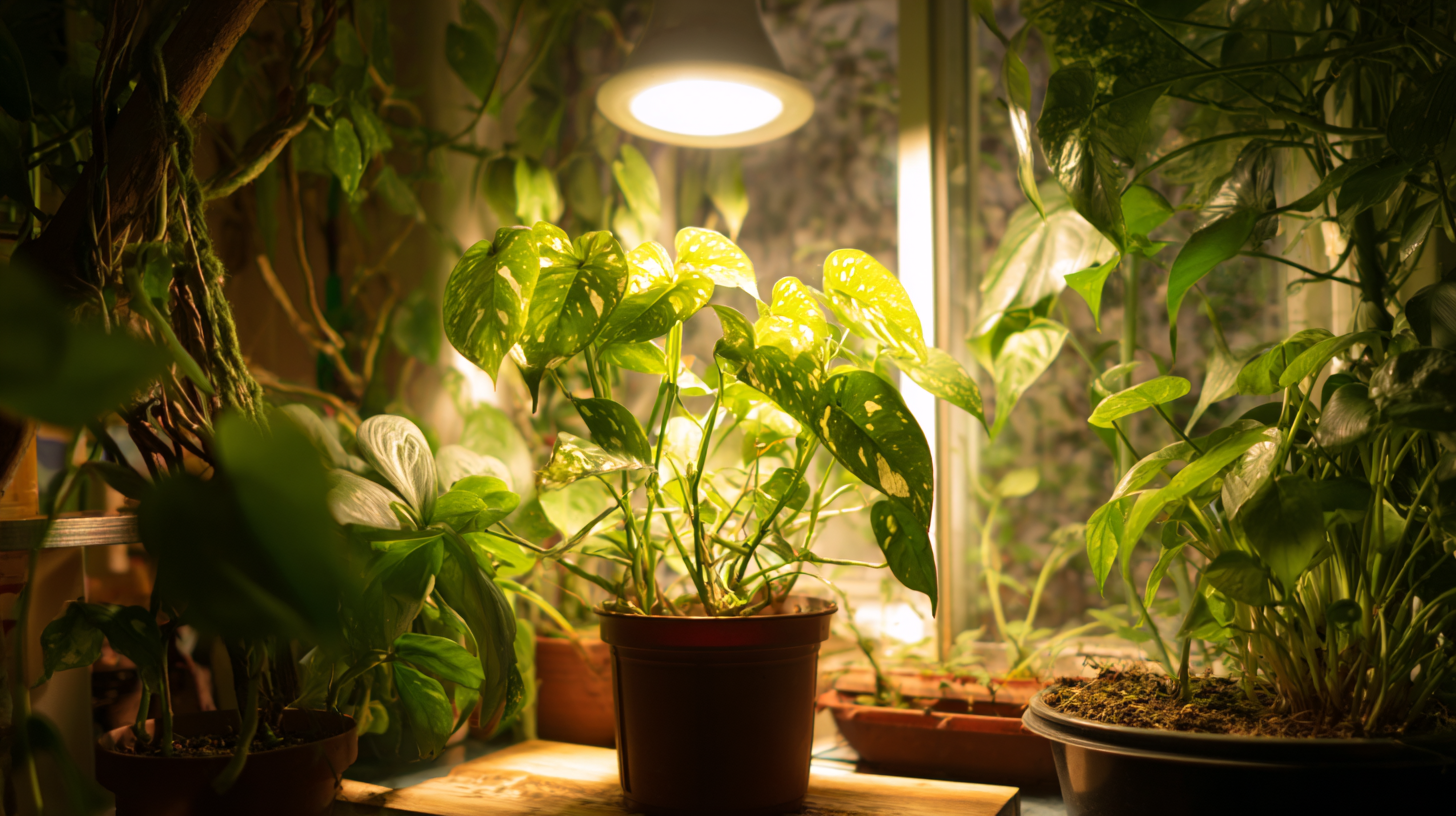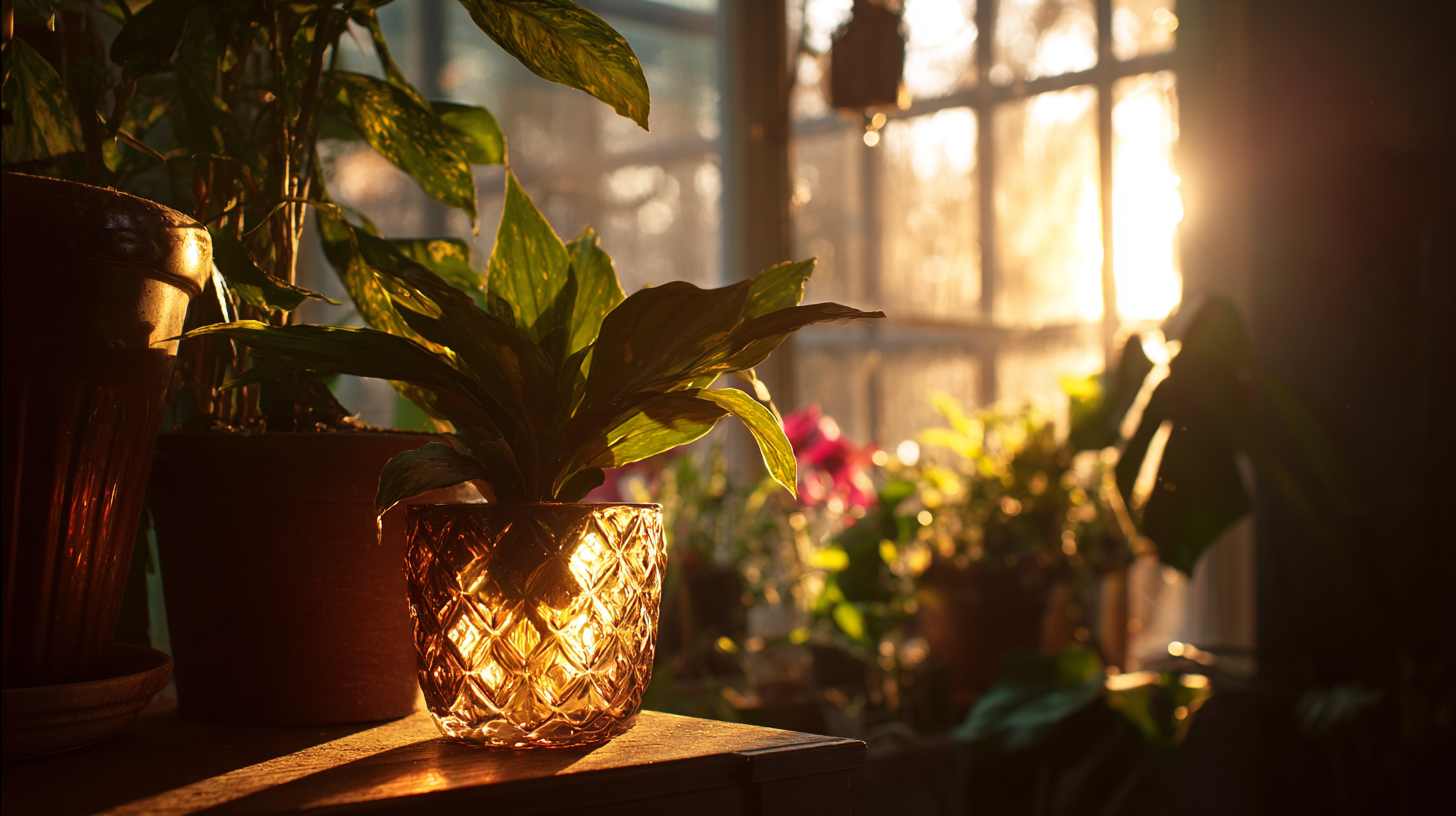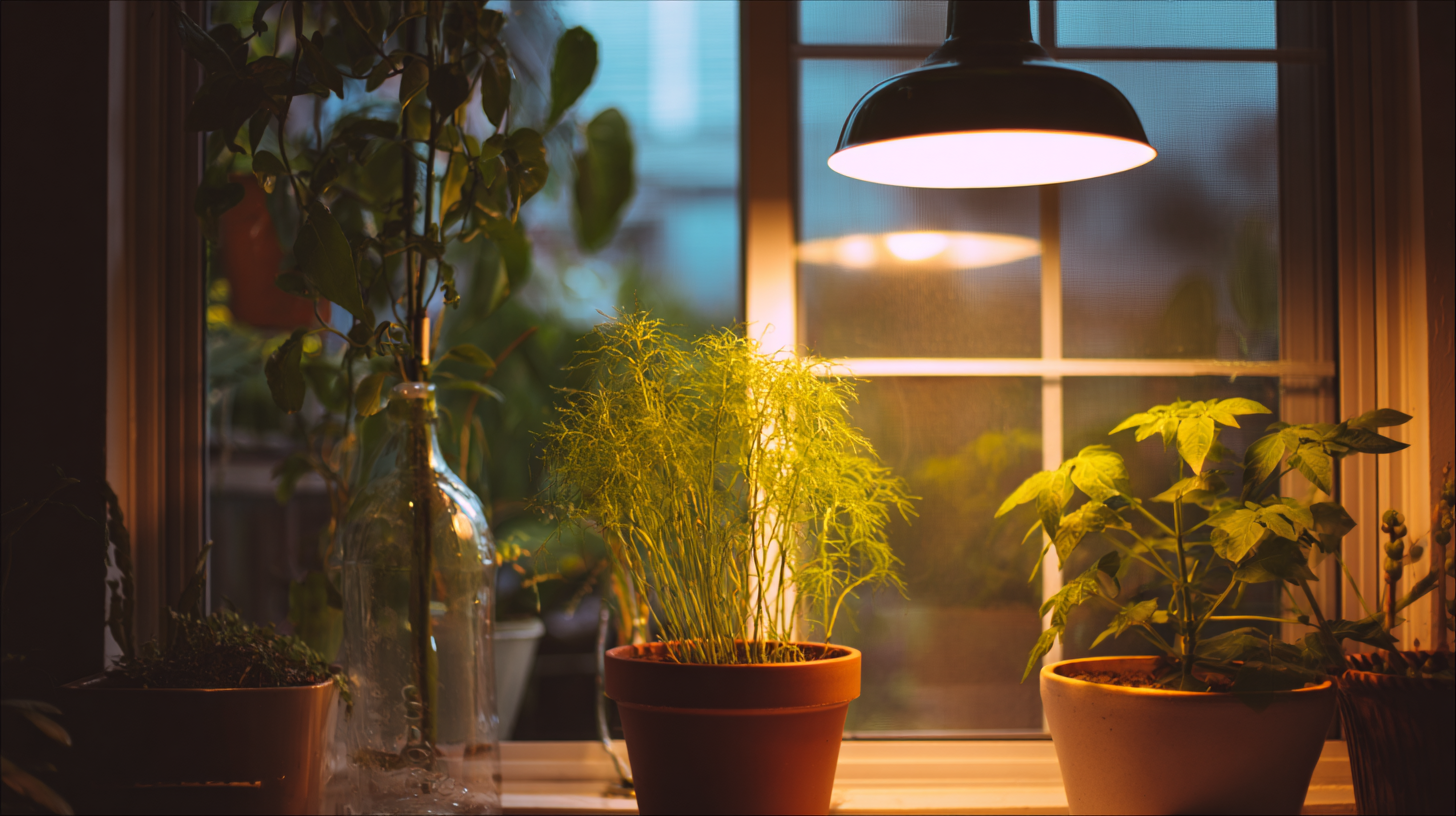Ultimate Guide to Choosing the Best Artificial Sunlight Lamp for Your Indoor Plants
The increasing popularity of indoor gardening has led to a surge in demand for optimal growth solutions, with the artificial sunlight lamp becoming an essential tool for plant enthusiasts. According to a report by the National Gardening Association, 55% of households in the United States engage in some form of indoor gardening, citing the lack of natural sunlight as a primary challenge. In a world where urban living limits access to natural light, artificial sunlight lamps are engineered to replicate the full spectrum of sunlight, thereby fostering healthy plant growth indoors. A study published in the Journal of Agriculture and Food Research highlights that using the right artificial sunlight lamp can increase plant growth rates by up to 30% compared to those grown without supplemental lighting. As consumers seek quality and efficiency, the availability of high-performance artificial sunlight lamps, particularly those manufactured in China, positions them as a cost-effective solution for indoorplant health and vitality across the globe.

Understanding the Importance of Artificial Sunlight for Indoor Plants
Artificial sunlight lamps play a crucial role in supporting indoor plants, especially in environments where natural light is limited. According to research from the National Institute of Health, plants require specific light wavelengths for photosynthesis, predominantly blue (400-500 nm) and red (600-700 nm) light. This highlights the importance of choosing a lamp that can provide these essential wavelengths to ensure optimal growth and health of your indoor plants.
In fact, a study published in the Journal of Environmental Horticulture showed that plants grown under artificial lighting that mimicked natural sunlight not only exhibited improved growth rates but also had enhanced flowering and fruiting compared to those grown under insufficient lighting. The right artificial sunlight lamp can produce the correct spectrum of light, promoting faster growth and better yields. As indoor gardening continues to gain popularity, understanding how to select the best lamp tailored to your plants' needs can significantly impact your indoor gardening success.
Ultimate Guide to Choosing the Best Artificial Sunlight Lamp for Your Indoor Plants
| Lamp Type | Light Spectrum | Wattage | Coverage Area (sq ft) | Price ($) | Best For |
|---|---|---|---|---|---|
| LED Grow Light | Full Spectrum | 30W | 4 | 39.99 | Seedlings, Herbs |
| Fluorescent Lamp | Cool White | 40W | 6 | 24.99 | Leafy Greens |
| HID Lamp | Dual Spectrum | 400W | 10 | 89.99 | Fruiting Plants |
| Incandescent Bulb | Warm White | 60W | 2 | 9.99 | Succulents |
| Smart Grow Light | Adjustable Spectrum | 20W | 3 | 49.99 | All Indoor Plants |
Types of Artificial Sunlight Lamps: Overview and Categories
When it comes to artificial sunlight lamps for indoor plants, understanding the different types available is crucial for creating an optimal growing environment. Broadly, these artificial sunlight lamps can be categorized into three main types: fluorescent, LED, and HID (High-Intensity Discharge). According to a report by Grand View Research, the LED grow light segment is projected to witness significant growth in the coming years, driven by energy efficiency and the ability to customize spectrum output needed for plant photosynthesis.
Fluorescent lights, particularly T5 bulbs, are favored for their affordability and efficiency, providing a full spectrum of light ideal for seedlings and vegetative growth. However, for more intense light requirements during flowering phases, HID lamps, which can be either Metal Halide (MH) or High-Pressure Sodium (HPS), are more effective. Data from the National Renewable Energy Laboratory highlights that HID lamps can produce up to 1,200 µmol/m²/s of PAR (Photosynthetically Active Radiation), making them suitable for larger indoor gardens.
Additionally, selecting the right lamp should also consider the heat output and positioning. LED lamps, while more expensive upfront, emit less heat and have a longer lifespan, often rated for up to 50,000 hours, significantly reducing replacement costs over time. By understanding these types and their specific benefits, indoor gardeners can better cater to their plants' needs, ensuring healthy growth and vibrant yields.
Key Features to Consider When Choosing a Lamp for Your Plants
When selecting the ideal artificial sunlight lamp for your indoor plants, it’s essential to focus on several key features that can significantly impact growth. First, consider the light spectrum of the lamp. Plants generally thrive under full-spectrum lights, which replicate natural sunlight. Look for lamps that offer both blue and red light, as blue light promotes vegetative growth while red light boosts flowering and fruiting.
Another critical feature is the intensity of the light. Different plant species have varying light requirements; therefore, adjustable brightness levels can be incredibly beneficial. Ensure that the lamp chosen can be dimmed or brightened to cater to the specific needs of your plants. Additionally, consider the lamp's size and coverage area. A larger lamp may be necessary for bigger plants or multiple plants, while smaller lamps are suitable for individual plants or smaller setups. By taking these factors into account, you can choose the best artificial sunlight lamp that will foster a thriving indoor garden.

Optimal Light Spectrum: Which Lamp Type Suits Your Plants Best?
When selecting the best artificial sunlight lamp for your indoor plants, understanding the optimal light spectrum is crucial. Recent studies have shown that different spectrums, particularly the combination of red and blue light, significantly influence plant physiological responses. For instance, high blue light intensity has been associated with increased reducing power in coriander plants, indicating better growth and vitality. This illustrates how blue light can enhance photosynthesis and boost antioxidant properties, making it essential for vibrant indoor gardening.
Moreover, the trend towards using full-spectrum LED grow lights has gained momentum among indoor gardeners. These lights not only mimic natural sunlight but also support the growth of a wide variety of plants, from herbs to ornamental species. Research indicates that dynamic spectrum lighting can lead to substantial improvements in plant yield and quality. Thus, when choosing a lamp, consider options that offer adjustable spectrums to cater to the specific needs of your plants. This tailored approach ensures that your indoor oasis thrives under optimal lighting conditions, promoting a lush and healthy environment in your home.

Budget vs. Quality: Finding the Right Balance in Lamp Selection
When it comes to selecting an artificial sunlight lamp for your indoor plants, the balance between budget and quality is crucial. Budget-friendly options often attract novice indoor gardeners due to their lower upfront costs. However, these cheaper lamps may not provide the consistent light spectrum or intensity necessary for growing plants effectively. It's essential to weigh these immediate savings against the potential for longer-term costs, such as plant loss or slower growth, which can arise from using inferior lighting solutions.
On the other hand, investing in a high-quality lamp can enhance your indoor gardening experience significantly. Quality lamps typically offer better energy efficiency, a more appropriate light spectrum, and durability that budget options lack. Brands that prioritize their technology and user reviews often provide insights into their performance, helping you make an informed decision. While the initial investment might be higher, the benefits of healthier plants and reduced hassles often justify the expense. Finding the right balance means considering not just the price tag, but also the efficiency and longevity of the lamp to nurture your indoor garden effectively.
